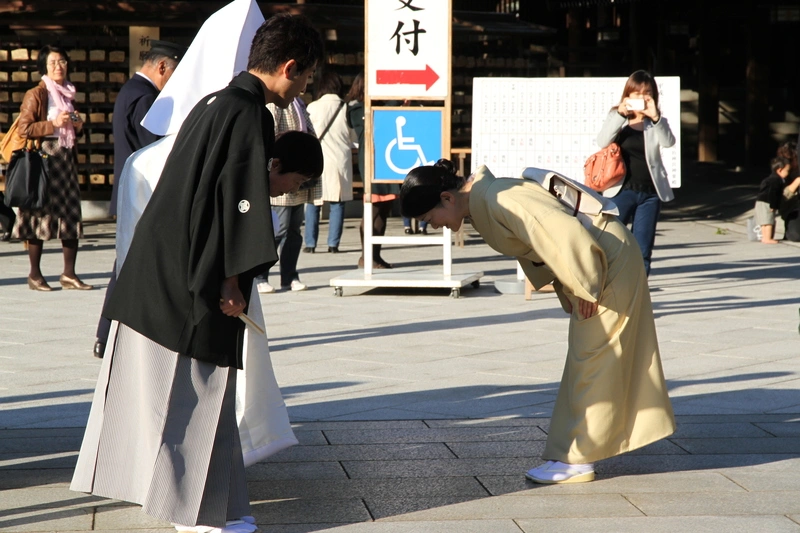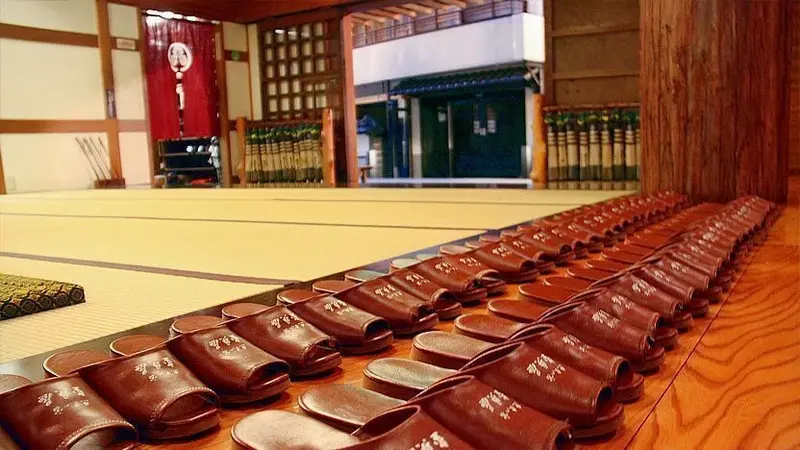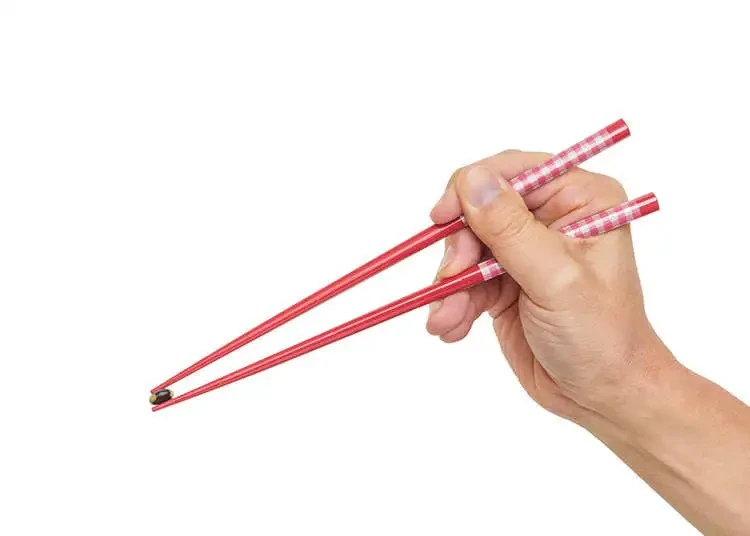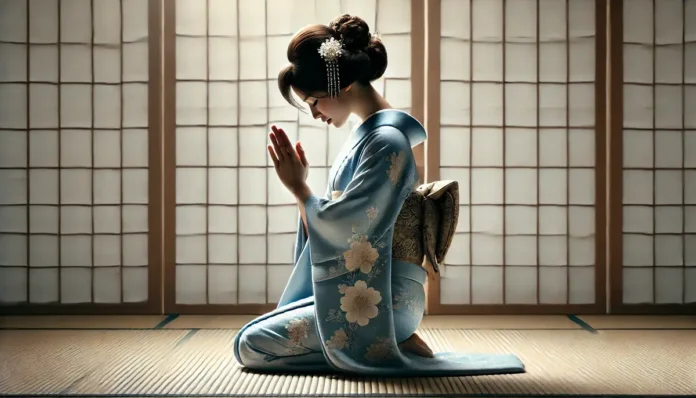Japanese etiquette is an integral part of the country’s culture, emphasizing respect, harmony, and mindfulness in daily interactions.
From dining manners to social customs, understanding Japanese etiquette is essential for navigating both formal and informal situations.
This article explores ten essential rules of Japanese etiquette, offering practical insights to ensure a polite and respectful experience during your time in Japan.
Japanese Etiquette
1. Bowing: A Universal Gesture of Respect

In Japanese etiquette, bowing (ojigi) is a fundamental way to greet, show gratitude, or apologize.
- The depth and duration of the bow reflect the level of respect, with deeper bows used in formal settings.
- Casual bows are common among friends, while business or ceremonial interactions require more formal gestures.
For example, a visitor meeting a host for the first time may bow deeply as a sign of respect and appreciation.
2. Shoes Off Indoors

One of the most recognized aspects of Japanese etiquette is removing shoes before entering a home, temple, or traditional inn (ryokan).
- Slippers are usually provided for indoor use, and separate toilet slippers are available in restrooms.
- This custom highlights the importance of cleanliness and respect for shared spaces.
3. Proper Use of Chopsticks

Japanese etiquette places significant emphasis on proper chopstick usage during meals.
- Avoid sticking chopsticks upright in rice, as this resembles a funeral ritual.
- Do not pass food from chopsticks to chopsticks, as this mimics a cremation rite.
- Instead, place chopsticks on the provided rest when not in use.
4. Silence on Public Transport
Maintaining quietness on public transportation is a hallmark of Japanese etiquette.
- Talking loudly, playing music without headphones, or making phone calls are considered disruptive.
- This practice reflects Japan’s cultural value of respecting shared spaces and the comfort of others.
5. The Art of Giving and Receiving Gifts
Gift-giving is a significant aspect of Japanese etiquette, often used to express gratitude or build relationships.
- Gifts should be wrapped neatly, as presentation is just as important as the gift itself.
- When receiving a gift, it is customary to express gratitude and politely refuse at first, as a gesture of humility.
6. Politeness in Conversation
Japanese etiquette emphasizes indirect communication and avoiding confrontation.
- Use polite language and expressions such as sumimasen (excuse me) or arigatou gozaimasu (thank you very much).
- Avoid interrupting others, and when offering opinions, use softer phrases like “perhaps” or “I think.”
7. Queueing and Public Behavior
In Japan, orderly queueing is an essential aspect of public behavior.
- People line up in single-file queues at train stations, bus stops, and even elevators.
- Pushing or cutting in line is seen as disrespectful and disrupts the societal emphasis on harmony.
8. Dining Customs: The Right Way to Enjoy Meals
Japanese etiquette dictates several dining customs to follow:
- Say itadakimasu (I humbly receive) before eating and gochisousama deshita (thank you for the meal) after finishing.
- Slurping noodles is acceptable and shows appreciation for the dish.
- Refrain from pouring your own drink; instead, pour for others and allow them to reciprocate.
9. Respecting Temples and Shrines
When visiting temples and shrines, observing proper behavior is a key part of Japanese etiquette.
- At Shinto shrines, bow lightly, toss a coin into the offering box, and clap twice before praying.
- At Buddhist temples, bow quietly and avoid disrupting others who are meditating or praying.
- Photography may be restricted in sacred areas, so always check for signage.
10. Tipping: An Unnecessary Gesture
Unlike in many countries, tipping is not part of Japanese etiquette and may even be considered rude.
- Exceptional service is already included in the price, and leaving money can create awkwardness.
- Instead, express your gratitude verbally or with a small token gift if you feel inclined to show appreciation.
Cultural Significance of Japanese Etiquette
Japanese etiquette is a reflection of the country’s cultural values, emphasizing respect for others, harmony in interactions, and mindfulness in daily life.
For Japanese people, adhering to these customs fosters social cohesion and demonstrates mutual respect.
For visitors, understanding and practicing Japanese etiquette is a way to connect with the culture and show appreciation for its traditions.
Conclusion
Mastering Japanese etiquette is an essential step toward navigating the country’s social and cultural landscape with grace and respect.
From bowing and proper chopstick use to observing quietness on public transport, these customs offer valuable insights into Japan’s emphasis on harmony and respect.
By following these ten essential rules, you can ensure a polite and enriching experience that reflects the spirit of Japanese etiquette.


![How to tell the difference between a Cherry Blossom, a Plum Blossom, and a Peach Flower [SAKURA] How to tell the difference between a Cherry Blossom - a Plum Blossom - and a Peach Flower [SAKURA]](https://wowjapan.asia/wp-content/uploads/2016/04/How-to-tell-the-difference-between-a-Cherry-Blossom-a-Plum-Blossom-and-a-Peach-Flower-SAKURA-150x150.webp)





